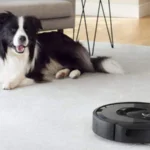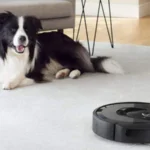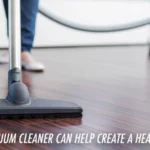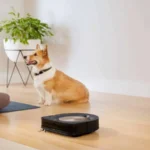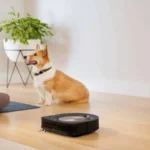As a pet owner, you love your furry friend and want to keep them safe and happy. However, the introduction of a smart vacuum cleaner in your home can be overwhelming for your pet, potentially resulting in anxiety, stress, or aggressive behavior. It’s essential to train your pet to accept this new gadget to avoid any negative consequences. But, where do you start? Don’t worry. We’ve got you covered! In this article, we’ll discuss the common mistakes you should avoid when training your pet to accept a smart vacuum cleaner and provide you with tips for successful training. So, grab a cup of coffee and let’s dive in!
Why Training Your Pet is Important
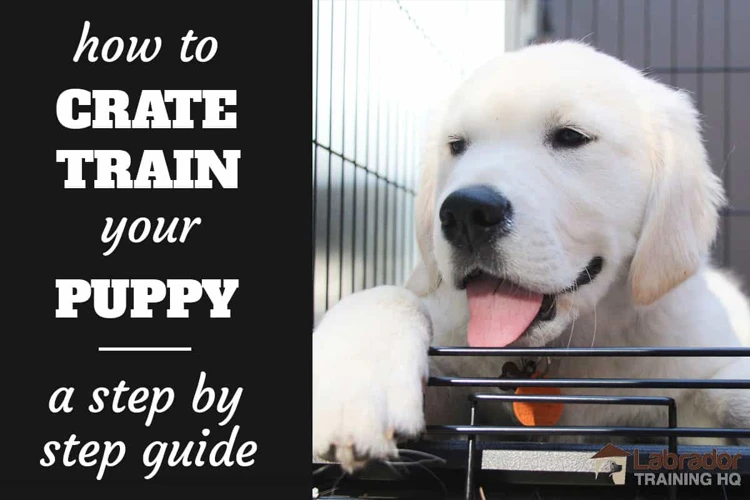
As a pet owner, we all want to keep our homes clean and tidy, but what happens when your furry friend doesn’t understand the concept of a smart vacuum cleaner? Training your pet to accept a smart vacuum cleaner is important for your pet’s wellbeing and your own sanity. In this section, we will explore the reasons why pet training is crucial for a harmonious home environment. By following the tips and suggestions provided in this article, you’ll be one step closer to successfully training your pet to accept the smart vacuum cleaner. For more pet smart vacuum training tips, check out these five tips to optimize your pet’s learning.
Creating a Positive Association
When introducing your pet to a smart vacuum cleaner, creating a positive association is essential. This association will help your pet feel comfortable and relaxed around the vacuum cleaner, making the training process easier and more successful. Here are some ways to create a positive association:
| Tip | Description |
|---|---|
| Use Treats and Rewards | One of the most effective ways to create a positive association is by using treats and rewards. Whenever your pet shows positive behavior, reward them with a treat or praise. Over time, your pet will begin to associate the vacuum cleaner with positive experiences. |
| Associate the Vacuum Cleaner with Playtime | Try playing with your pet around the vacuum cleaner. This can help create a positive association with the vacuum cleaner by making it seem like a playful object. Just be sure to turn the vacuum cleaner off and unplug it before letting your pet approach. |
| Keep the Environment Calm | Pets can pick up on your emotions, so it’s important to stay calm and relaxed during the training process. You can also play calming music or use calming scents to help create a peaceful environment for your pet. |
By incorporating these tips, you can create a positive association between your pet and the smart vacuum cleaner. This will help your pet feel more comfortable and confident during the training process. For more information on how to train your pet to accept a smart vacuum cleaner, check out our article on Pet Smart Vacuum Training.
Encouraging Calmness
When it comes to training your pet to accept a smart vacuum cleaner, encouraging calmness is an essential step in achieving success. Pets can easily become anxious or stressed when introduced to new and unfamiliar objects, and a smart vacuum cleaner is no exception. Teaching them to remain calm and composed during vacuuming sessions will go a long way in making the experience more positive for both you and your pet. Here are some tips for encouraging calmness during vacuum training:
- Create a safe space: It’s important to create a safe and comfortable space for your pet during vacuuming. This will give them a sense of security and help to reduce anxiety. Provide them with their favorite blanket, toy, or bed in a quiet room away from the noise of the vacuum cleaner. You can also close the door to keep them away from the vacuuming area entirely.
- Stay calm: If you become anxious or stressed, your pet will pick up on these emotions and become more agitated. Remain calm and speak in a soothing tone when introducing the vacuum cleaner to your pet. This will help to instill a sense of calmness in your pet, making them more willing to accept the new device.
- Practice relaxation techniques: Relaxation techniques such as deep breathing or meditation can also be effective in calming your pet during vacuum sessions. There are even pet-specific relaxation techniques such as massage or acupressure that you can try.
- Use positive reinforcement: Just as positive reinforcement is crucial for teaching your pet to accept the vacuum cleaner, it’s also essential for encouraging calmness. Praise and treat your pet when they display calm behavior during vacuuming sessions. This will help to reinforce the idea that being calm is a desirable behavior.
By following these tips, you can encourage calmness in your pet, making the process of training them to accept a smart vacuum cleaner easier and more successful. Remember, patience and consistency are key, so don’t be discouraged if it takes some time for your pet to adjust. Keep practicing, and soon enough, your pet will be calmly accepting the smart vacuum cleaner without any issues.
If your pet is particularly scared of smart vacuum cleaners, you can read more about how smart vacuums can help reduce fear in pets in our article “How Smart Vacuums Can Help Your Scared Pet”. To learn more about pet training with a smart vacuum cleaner, read our article “Smart Vacuum Pet Training: Tips and Tricks”.
Common Mistakes to Avoid
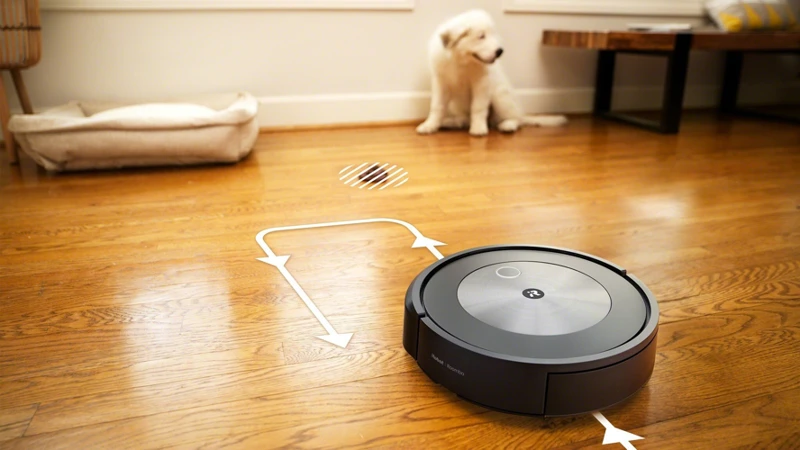
When it comes to training your pet to accept a smart vacuum cleaner, it’s important to be aware of the common mistakes that can hinder your progress. These mistakes can lead to setbacks and make the whole process more difficult for both you and your pet. To avoid these problems and make the training process as smooth as possible, be sure to steer clear of the following missteps. And if you want to further enhance your pet’s calmness during vacuum cleaning, consider checking out our tips on how to keep your pet calm during vacuum cleaning.
Starting with a Loud Vacuum Cleaner
When it comes to introducing your pet to a smart vacuum cleaner, starting with a loud vacuum cleaner is one of the most common mistakes to avoid. While it might seem like a good idea to get your pet used to the noise from the get-go, this approach can actually do more harm than good. Here’s why:
1. It can create a negative association: Pets have a heightened sense of hearing, and a loud vacuum cleaner can be very unsettling for them. If you start with a loud vacuum cleaner, your pet might associate the noise with something negative or scary, making it difficult to train them to accept the smart vacuum cleaner later on.
2. It can cause stress: Loud noises can be stressful for pets, leading to anxiety and even physical symptoms such as shaking, drooling, or hiding. This stress can make it harder for your pet to learn and focus during training sessions.
3. It can be overwhelming: A loud vacuum cleaner can be overwhelming for a pet who has never heard such a sound before. Introducing a loud noise without proper preparation can be too much for your pet to handle, resulting in avoidance or even aggression towards the vacuum cleaner.
To avoid these negative consequences, it’s important to start with a quieter vacuum cleaner and gradually increase the noise level over time. By taking a gradual approach, you can help your pet to build positive associations with the smart vacuum cleaner and avoid any unnecessary stress or anxiety.
Not Gradually Introducing the Vacuum Cleaner
One of the most common mistakes that pet owners make when training their pets to accept a smart vacuum cleaner is not gradually introducing the vacuum cleaner. This mistake is easy to make when you are excited to see your pet accept the new device, but it can be detrimental to the training process.
What happens when you don’t gradually introduce the vacuum cleaner?
If you introduce the vacuum cleaner too quickly or turn it on at full power right away, your pet may become frightened, anxious or aggressive. This can lead to long-term negative associations with the vacuum cleaner, and can even make your pet scared of any other types of cleaning equipment.
To prevent this from happening, it is important to gradually introduce the vacuum cleaner in a way that makes your pet feel safe and comfortable. You need to make sure that you are not skipping any necessary steps in the process.
The following table demonstrates the gradual introduction process:
| Step | Instructions |
|---|---|
| Step 1 | Introduce the vacuum cleaner to your pet without turning it on. Allow your pet to sniff the device, and reward them with a treat or praise for any calm behaviour. |
| Step 2 | Turn the vacuum cleaner on at its lowest setting, but keep a distance from your pet. Allow your pet to observe the vacuum cleaner and reward them for any calm behaviour. |
| Step 3 | Gradually decrease the distance between the vacuum cleaner and your pet. Allow them to get used to the noise at their own pace, and reward them for any calm and positive behaviour. |
| Step 4 | Gradually increase the power of the vacuum cleaner. If your pet becomes anxious or frightened, lower the power and start again at the previous step. Remember to always reward calm and positive behaviour. |
Why is gradual introduction important?
Gradual introduction helps your pet to build a positive association with the smart vacuum cleaner by making them feel safe and comfortable. This approach also allows your pet to get used to the new device at their own pace, which reduces anxiety and stress. By gradually introducing the vacuum cleaner, you can avoid scaring your pet and prolonging the training process.
Not Giving Treats or Praise
When training your pet to accept a smart vacuum cleaner, one of the biggest mistakes that you could make is not rewarding your furry friend with treats or praise. Pets learn best through positive reinforcement, and withholding rewards can make them reluctant to follow your commands.
Why is it important to give treats and praise?
Giving treats and praise establishes a positive association with the vacuum cleaner. This encourages your pet to not only tolerate the presence of the vacuum cleaner but even consider it as a friend.
You can use small pieces of your pet’s favorite snacks or a pat on the head as a way to congratulate them for responding to your commands.
How to use treats and praise effectively?
- Use treats and praise consistently to reinforce positive behavior.
- Make sure to give treats in moderation to avoid overfeeding your pet.
- Choose appropriate treats; hard-to-chew treats may distract your pet’s attention from the vacuum cleaner.
- Make sure to use a tone that your pet recognizes as rewarding; this will encourage them to repeat good behavior.
Remember, training your pet to cooperate with a smart vacuum cleaner takes time and patience. Don’t expect immediate results, and don’t forget to reward your pet along the way. With proper motivation and positive reinforcement, your furry friend might even look forward to the time when the vacuum cleaner comes out!
Tips for Successful Training
So, you’ve learned about the importance of training your pet to accept a smart vacuum cleaner and the common mistakes to avoid. Now, it’s time to dive into some tips for successful training. These tips can help make the process smoother and more enjoyable for both you and your pet. With a little patience, effort, and creativity, you can have your pet accepting the vacuum cleaner in no time. Let’s take a look at some effective tips that can make training your pet a success.
Start with a Silent Vacuum Cleaner
When starting to train your pet to accept a smart vacuum cleaner, one of the most crucial tips to keep in mind is to start with a silent vacuum cleaner. This means that you should use the vacuum cleaner without turning it on, so your pet can get used to its presence without getting overwhelmed by the noise it produces. Introducing them to a quietly placed vacuum will help remove any fear and negative associations they may have with this new device.
To start, place the vacuum cleaner in plain sight where your pet is likely to spend their time. Encourage them to approach it and engage with it using a treat or a toy. Use calm and reassuring tones to communicate to your pet that the vacuum cleaner is nothing to fear.
It is important to note that using a silent vacuum cleaner requires a lot of patience and consistent repetition. Make sure that your pet is comfortable with the vacuum cleaner before you begin using it for cleaning. Gradually turning up the volume of the vacuum cleaner over a period is advisable after your pet is comfortable.
Some tips to remember when starting with a silent vacuum cleaner include:
- Place the vacuum cleaner in a visible spot in the room where your pet is likely to hangout.
- Don’t rush things; give your pet enough time to explore, sniff and come close to it in a non-threatening way to reduce fear.
- Use treats, praises and toys to create a positive association with the vacuum cleaner.
Remember to be patient and take your time when training your pet to accept a smart vacuum cleaner. Using a silent vacuum cleaner is just the first step, and it sets the foundation for future training with a noisy device. Gradual steps will help make the process less daunting for your pet and help ensure that they are comfortable around the vacuum cleaner in the future.
Gradually Introduce the Vacuum Cleaner
When it comes to training your pet to accept a smart vacuum cleaner, one of the most important tips is to gradually introduce the vacuum cleaner. This means exposing your pet to the vacuum cleaner gradually, so they can get used to it at their own pace.
Here’s a table that outlines how to gradually introduce your pet to the vacuum cleaner:
| Step | Description |
|---|---|
| 1 | Start by placing the vacuum cleaner in a room where your pet is not present. Turn it on and let it run for a few minutes |
| 2 | Once your pet seems comfortable with the vacuum cleaner noise from step 1, move the vacuum cleaner to another room where your pet is present. Turn it on and let it run for a few minutes while your pet is in the room with you. |
| 3 | Move the vacuum cleaner closer to your pet gradually. If your pet seems scared or uncomfortable, move it away again until they seem comfortable with the noise level. Repeat this process until the vacuum cleaner is close to your pet. |
It’s important to keep in mind that every pet is different and may require more or less time for each step. Patience and consistency are key to successfully training your pet to accept a smart vacuum cleaner. Gradually introducing the vacuum cleaner in a positive and encouraging environment will help your pet feel more comfortable around the cleaner, and hopefully accept it as a normal part of their daily routine.
Use Treats and Praise
When it comes to training your pet to accept a smart vacuum cleaner, one of the most effective tools you can use are treats and praise. Positive reinforcement is a powerful training technique that can help your pet feel rewarded and motivated to learn. Here are some tips on how to use treats and praise to your advantage:
- Choose the right treats: It’s important to choose treats that your pet loves and will be motivated to work for. Small, bite-sized treats are usually the best option, as they can be quickly consumed and won’t fill up your pet too much.
- Reward small steps: During the training process, make sure to reward your pet for small steps towards acceptance. This could be something as simple as your pet sniffing the vacuum cleaner or walking past it without getting scared. The more you reward these small steps, the more your pet will associate the vacuum cleaner with positive experiences.
- Use verbal praise: In addition to treats, don’t forget to give your pet verbal praise when they do something right. Use a happy, encouraging tone of voice and say things like “good job” or “good boy/girl.”
- Be consistent: Consistency is key when it comes to training your pet. Make sure to use treats and praise every time your pet does something positive. If you only reward them occasionally, they may become confused and lose motivation.
- Avoid using treats as a bribe: While treats can be a great motivator, they should never be used as a bribe or a form of punishment. If your pet doesn’t do what you want them to do, avoid showing them the treat as a way to get them to comply.
By using treats and praise effectively, you can help make the training process more enjoyable and successful for both you and your pet. Be patient, consistent, and always remember to give your furry friend plenty of love and affection along the way.
Be Patient and Consistent
Training your pet to accept a smart vacuum cleaner will not happen overnight. It is important to stay patient and consistent throughout the entire process. Consistency means sticking to the same routine and reinforcement techniques, while patience means not losing hope when progress seems slow.
One way to stay consistent is by creating a schedule for training sessions. Set aside a specific time each day to work with your pet and the vacuum cleaner, even if it’s just for a few minutes. A consistent schedule will help your pet build a routine around the training, which may make them more receptive.
Another key to success is reinforcing positive behavior with treats and praise. When your pet remains calm around the vacuum cleaner, offer them a treat or provide verbal affirmation. This positive reinforcement encourages your pet to continue behaving in a way that pleases you.
Remember to stay patient throughout the training process. It’s easy for both you and your pet to become frustrated and lose hope, but consistency and patience is key to achieving long-term success. Keep a positive attitude and celebrate every small victory.
It’s also important to understand that every pet is different, and it may take longer for some pets to accept the vacuum cleaner than others. Don’t expect your pet to be perfect right away, and be willing to tailor your approach to suit their individual needs.
To summarize, staying patient and consistent is crucial when training your pet to accept a smart vacuum cleaner. Use positive reinforcement techniques, create a schedule for training sessions, and adjust your approach to suit your pet’s needs. With time, patience, and consistency, you can successfully train your pet to coexist peacefully with your smart vacuum cleaner.
| Key Points: |
| Stay consistent with routine and reinforcement techniques |
| Reinforce positive behavior with treats and praise |
| Be patient and celebrate every small victory |
| Understand that every pet is different and tailor your approach to suit their needs |
Conclusion
In conclusion, training your pet to accept a smart vacuum cleaner can be a daunting task, but it is essential to ensure that both your pet and your vacuum cleaner can coexist peacefully in your home. Remember, the key to success is to create a positive association, encourage calmness, and avoid common mistakes.
Starting with a loud vacuum cleaner or not gradually introducing the vacuum cleaner can cause fear or anxiety in your pet, making the training process more difficult. It is important to use treats and praise during the training process as this will help to create positive reinforcement in your pet’s mind.
When training your pet, it is important to be patient and consistent. The process may take time, but with patience and consistency, your pet will eventually learn to accept the vacuum cleaner.
To ensure that your pet remains calm throughout the training process, it is recommended to start with a silent vacuum cleaner and gradually introduce the noise as your pet becomes more comfortable. Remember, a calm and happy pet will make the training process much easier.
In conclusion, training your pet to accept a smart vacuum cleaner requires time, patience, and consistency. By avoiding common mistakes and using treats and praise, your pet will eventually learn to accept the vacuum cleaner and coexist peacefully with it in your home.
Frequently Asked Questions
What is a smart vacuum cleaner?
A smart vacuum cleaner is a type of robotic vacuum cleaner that uses advanced technology, such as artificial intelligence and sensors, to navigate and clean floors without human input.
Can smart vacuum cleaners harm pets?
No, smart vacuum cleaners typically do not harm pets. However, it is important to properly train pets to accept and tolerate the vacuum cleaner to avoid any potential stress or anxiety.
What are some benefits of training pets to accept a smart vacuum cleaner?
Training pets to accept a smart vacuum cleaner can reduce stress and anxiety for both pets and owners, improve the cleanliness of the home, and even provide entertainment as pets watch the vacuum cleaner do its work.
Why is creating a positive association important when training pets?
Creating a positive association with the smart vacuum cleaner helps pets associate the vacuum cleaner with positive experiences, such as treats or praise, instead of fear or anxiety.
What can happen if pets are not gradually introduced to the vacuum cleaner?
If pets are not gradually introduced to the vacuum cleaner, they may become scared, anxious, or even aggressive towards the vacuum cleaner.
How can treats and praise be used to train pets to accept a smart vacuum cleaner?
Treats and praise can be used to positively reinforce the presence of the vacuum cleaner and reward pets for calm behavior near the vacuum cleaner.
What is the best way to start training pets to accept a smart vacuum cleaner?
The best way to start training pets to accept a smart vacuum cleaner is by using a silent vacuum cleaner and gradually exposing pets to the vacuum cleaner over time.
How can consistency help with pet training?
Consistency is important when training pets to accept a smart vacuum cleaner because it helps pets understand what behavior is expected of them and reduces confusion or stress.
What should owners do if their pets continue to show fear or aggression towards the vacuum cleaner?
If pets continue to show fear or aggression towards the vacuum cleaner, owners should consider seeking professional help from a trainer or behaviorist to address any underlying issues.
Can smart vacuum cleaners replace traditional vacuum cleaners?
While smart vacuum cleaners are convenient and efficient for daily cleaning, they may not be able to replace traditional vacuum cleaners for deep cleaning or larger spaces.



